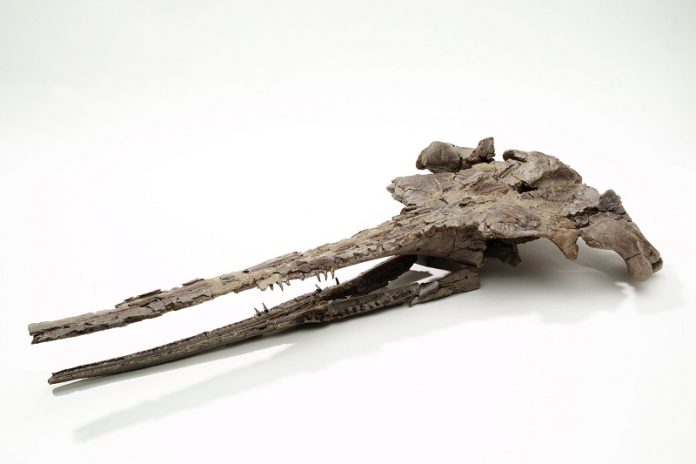
Researchers have discovered a new species of prehistoric dolphin, revealing that it could hear high-frequency sounds much like modern dolphins.
This ancient dolphin, named Romaleodelphis pollerspoecki, lived around 22 million years ago in a shallow sea that once covered parts of present-day Austria.
The study, led by Gertrud Rößner from the Bavarian State Collection of Paleontology and Geology (SNSB), was published in the Journal of Vertebrate Paleontology.
The fossil, discovered near Linz in Upper Austria, includes only parts of the skull, featuring a long snout and 102 uniform teeth. Scientists determined that this dolphin belonged to a group of toothed whales, but it stands out because of its unique characteristics.
Catalina Sánchez Posada, the study’s first author, analyzed the fossil as part of her master’s thesis, concluding that Romaleodelphis likely belongs to an ancient lineage of dolphins related to the Chilcacetus clade—a group previously only found in the Pacific region and South America.
Finding a potential European relative of this lineage provides new insights into dolphin evolution.
This ancient dolphin’s ability to hear high-frequency sounds is particularly significant, as it suggests that echolocation, a skill used by modern dolphins to navigate and hunt, may have developed earlier than previously thought.
The inner ear anatomy, carefully reconstructed using high-resolution CT scans, showed that Romaleodelphis pollerspoecki had a “bony labyrinth” structure suited to high-frequency hearing.
The skull, unearthed in 1980 by collector Jürgen Pollerspöck, was donated to the Bavarian State Collection of Paleontology and Geology. While the fossil was compressed and distorted, advanced imaging techniques at Ludwig Maximilians University in Munich allowed researchers to examine its structure in detail.
High-frequency hearing would have allowed Romaleodelphis to communicate at frequencies beyond the range of potential predators, providing both safety and a form of social interaction.
This capability aligns with echolocation, which helps modern dolphins detect obstacles and prey through sound. This ancient dolphin is one of the oldest known toothed whales to have developed high-frequency hearing, an ability that may have played a role in its survival and evolution.
The discovery of Romaleodelphis pollerspoecki not only adds a new species to the fossil record but also sheds light on the early evolution of echolocation and high-frequency hearing in dolphins.
Source: KSR.



